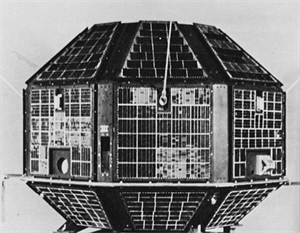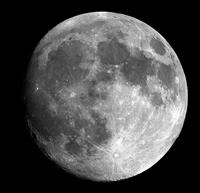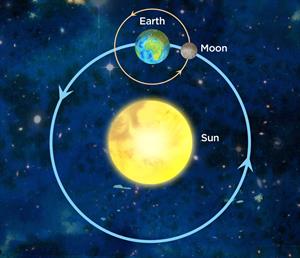PDF chapter test TRY NOW
India began space research activities just a few years after the independence. The Indian Space Research Organisation (ISRO) was founded in \(1969\) with the aim of improving space technology and applying it to various needs.

Logo of ISRO
India is focussing in the field of communication and remote sensing satellites, as well as space transportation systems and application programmes.
India's first satellite:
In \(1975\), Aryabhata became the first satellite to be launched into space. Since then, India has made significant progress in space programmes on par with developed countries.

Aryabhata
A Satellite is a celestial object which revolves around a planet.
Moon:
Moon is the only natural satellite of the earth. It is the closest celestial object which revolves around the earth in a fixed path at a distance of \(3,84,400\ km\). The diameter of the Moon is about \(3,474\ km\).

The Moon
Life does not exist on the moon as it does not contain air and water. Sound cannot be heard on the moon, since there is no atmosphere.
The Sun produces light on its own, whereas the moon does not. The moon reflects the Sun's light falling on it, and hence, only the portion of the moon that reflects the Sun's light is visible to us.

Reflection of Sunlight by the moon
One can never see the back (far side) of the moon because the moon completes its rotation on its axis while revolving around the earth. Due to this, the same portion of the moon always faces the earth.

Rotation of moon around earth
In other words, the length of the day and year on the moon is the same. The time taken to complete one rotation is approximately \(27\) days (exactly \(27.3\) days).
Reference:
https://upload.wikimedia.org/wikipedia/commons/b/bd/Indian_Space_Research_Organisation_Logo.svg
